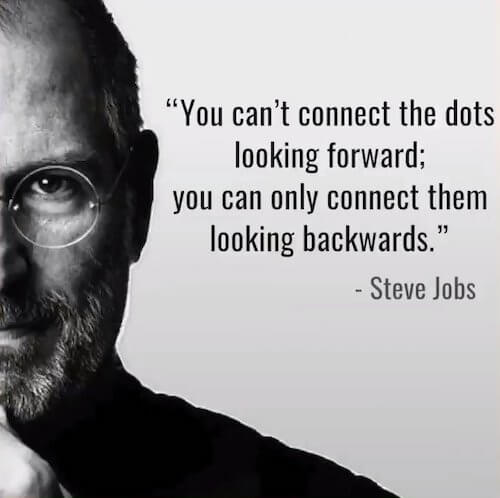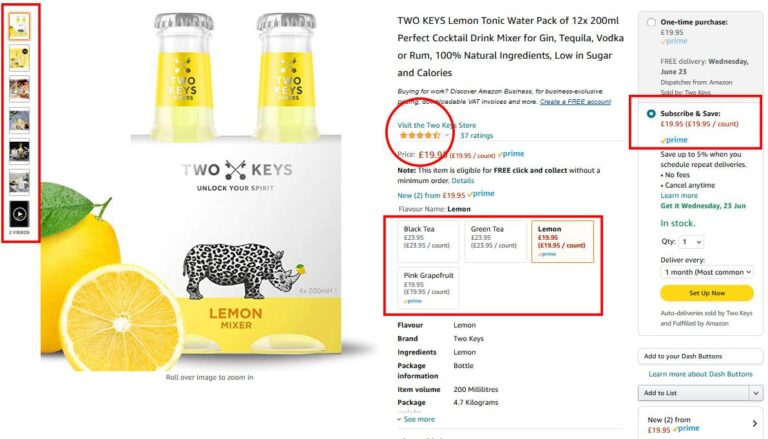
Text messaging has a major role to play as a marketing channel in this increasingly personalised and mobile landscape. On its own, it can offer one-to-one messaging that is much more likely to be received and read. And when joined-up with email, it has the capacity to be even more powerful.
Building on its data-led personalised email messaging and working alongside Wunderkind, the brand moved towards crafting similar one-to-one style messaging via text. Given that open rates are much higher on text than email, this move resulted in strong interactions with CTAs, and even gave consumers the opportunity to engage in on-the-fly text exchanges with the brand.
To achieve this perfect balance (and avoid messaging fatigue) requires smart automation and good visibility of customers’ engagement via other owned channels.
And personalisation is important. Users are more likely to buy and engage with content after seeing personalised messaging. They’re also more likely to recommend a brand to a friend or family member on the back of such messaging.
Where are UK businesses at with SMS?
Email and text are powerful marketing channels, and if content is personalised and relevant, brands can cut through the crowd. Personalised content is more likely to elicit a click, more likely to lead to a purchase, and is more likely to lead to the consumer becoming a brand advocate.
Automation is a major selling point across both email and SMS.
Emails and SMS are communication essentials, and are as vital to businesses as they are to individuals.
In 2021, email continues to be cited as the most popular marketing channel for many UK businesses. According to recent research from consumer engagement platform Wunderkind, 72% of UK ecommerce brands say it’s the main way they engage or communicate with their customers.
What does smart automation look like in these channels?
Both channels have a vital role to play. Marketers should be making use of email and text messaging to ensure consumers receive valuable content at the right time – the trick is using data to realise which channel will work best at a given time or following a particular prompt.
So, what do brands need to remain mindful of when it comes to email and text messaging?
Wunderkind’s aforementioned research dives into this. The company found more than 58% of UK consumers agree they’re more likely to buy a product via a personalised recommendation, with over 67% admitting they’re more likely to engage with personalised content. Beyond that, research from Gladly last year found that 77% of US customers would recommend a personalised experience to their friends and family.
Text messages can be automated in much the same way, but SMS has the added benefit of being able to reach the customer even if they’re away from their inbox. Geo-targeting can also be used to trigger a message if in a certain location at a particular time.
Striking the right balance
Performance, whether in terms of open rates or conversion, isn’t just based on sending the right content to consumers, but also ensuring it’s sent at the most appropriate time. Retailers need to strike a ‘Goldilocks’ balance in terms of message frequency (not too many or too few) – and they need to recognise that the ideal frequency won’t be the same for everyone.
Owned first-party data is important here. To effectively craft personalised content, retailers need to know how customers are interacting on site, what devices they use (and when), what they search for, and what tends to encourage them to take action etc. If brands have this kind of information, they can ensure messaging across email and SMS is personal, and can ensure it’s delivered (and seen) at a time when the consumer will be most appreciative and responsive.
Most retailers already have some degree of capability when it comes to triggered email (e.g. the ability to send automated messages following basic user actions like newsletter sign-up), but text messaging isn’t yet being used to the same degree.
The better retailers understand their customers, the better they can communicate with them.
How can ecommerce brands turn email and text into higher-performing revenue channels?
The result? Altogether, email and SMS combined to drive 19% of digital revenue for the brand – with text messaging alone accounting for 12%.
Comparatively, text messaging is lagging behind. Wunderkind found that just over 34% of UK ecommerce sites describe SMS as one of the main ways they communicate with customers, but there is abundant data showing how much potential SMS has if used correctly.
Texts are almost guaranteed to be opened and opened quickly (most are read within three minutes according to tatango research). Customers like texts and they respond to them, so it’s fair to suggest that, as brands move towards increased levels of personalisation, they should seriously consider the potential benefits of using SMS to a greater degree.
Driving better email and text campaigns with data
But users want text messages too. SMS is second to email for customer convenience, but open rates are far higher, messages are read promptly, and CTRs are impressive.
For timely messages reminding customers to complete a purchase while it’s fresh in their mind, or for persuading buyers to make the most of an offer online or in-store, text is incredibly efficient. And, for marketers that have previously relied predominantly on email as a means of communication, SMS can quickly reap financial rewards.
But texts can be seen away from the inbox. Both channels are great for triggered messages from onsite activity or time scheduled campaigns, while mobile has an added geo-targeting benefit. Importantly, you can be pretty sure an SMS will be opened and read quickly.
SimpleTexting puts average open rates for texts at 98% and CTRs at 30%. SMS also boasts high favourability among customers, with Wunderkind finding that 21% of consumers say it’s the most convenient channel for them, second only to email.
Five key take-aways
However, ultimately the optimal volume of engagement should be driven by the customer’s on-site behaviour and buying intent – both to maximise impact and avoid customers switching off (literally). Great moments to engage customers via text might include after the point of basket abandonment, or when a previously viewed product comes back in stock, or reduces in price.
1. It’s not a case of favouring email or text
But they aren’t the final step in the purchasing journey. These channels working together – as we saw with Case-Mate – make for a dynamic duo of personalised messages, but other touchpoints from your onsite landing pages to your branded content need to be up-to-scratch too.
2. Email is still popular among businesses and consumers…
Wunderkind has found that, when it comes to SMS, sending just four messages a month (to engaged, high-touch consumers) can deliver around 6% of a brand’s total digital revenue, while sending six can contribute to 10% of digital revenue.
3. Both have great automation potential…
Leading phone accessory brand Case-Mate recently bolstered its existing email marketing strategy with text messaging to great effect.
4. Better data means better personalisation…
While email has long been a key marketing channel, we’re probably more familiar with the humble text message as a functional tool – they let us know that our booking has been confirmed, or that our takeaway is out for delivery. But they can be useful earlier in the purchase journey too.
5. Email and text offer great one-to-one marketing potential…
The digital landscape is changing. More people are buying online and they expect a personal experience which is seamless from channel to channel. This necessitates the use of data. Leading brands are increasingly using first-party data to understand how best to engage with customers by offering targeted, relevant and personalised messages when the consumer wants them, and when they’re most likely to translate to sales.




